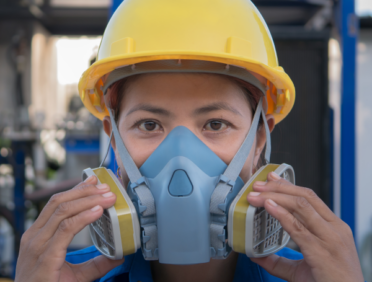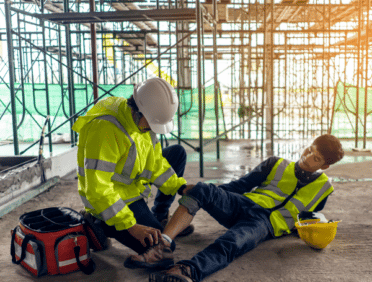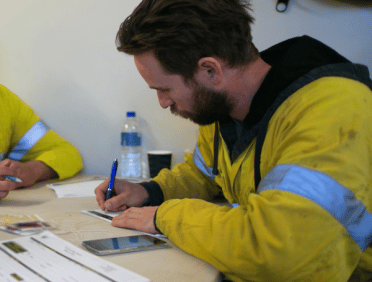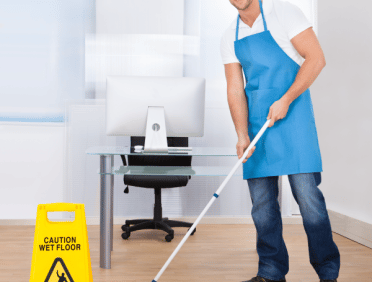Ensuring employees’ well-being and the seamless running of companies in the UK depends first on workplace health and safety. Employers legally have a duty to create a safe workplace, therefore lowering the risk of diseases and accidents. Good health and safety procedures not only guard workers but also improve morale and output.
Legal Framework
The main piece of law controlling workplace health and safety in the UK is the Health and Safety at Work, etc. Act 1974 This legislation describes employers’ overall responsibilities to guarantee their employees’ welfare, health, and safety.
Enforcing these rules, the Health and Safety Executive (HSE) guarantees conformity by means of direction and inspections. Companies have to do risk analyses, put safety policies into effect, and give their employees sufficient instruction.
Risk Assessments
Workplace safety depends critically on risk assessments. Companies have to spot any hazards, assess the risks connected to them, and put the suitable control actions into action. Examining the working environment, tools, and policies helps this approach guarantee employee safety is not threatened.
Especially when operations are changing or new equipment is being introduced, regular evaluations and updates of risk assessments are absolutely vital.
Employee Training
Giving staff members the information and abilities required to keep a safe workplace calls for training. Companies have to offer instructions on correct equipment use, emergency protocols, hazard identification, and reporting.
Frequent refresher training keeps staff members current on new rules and best practices and helps support safety procedures. Good training courses help to guarantee a quick reaction in case of an emergency and greatly lower workplace accidents.
Common Workplace Hazards
Many UK companies have several typical risks included in them. These include falls, stumbles, and slips resulting from uneven surfaces, damp flooring, or blocked paths. Manual handling accidents result from inappropriate lifting, carrying, or moving of large goods by staff members.
Significant health hazards arise from exposure to toxins like chemicals, dust, and fumes. Employers have to find these risks and take preventative actions, including ergonomic solutions, correct signage, and personal protective equipment (PPE).
Mental Health and Well-being
Workplace health and safety include mental health and well-being in addition to physical threats. Stress, worry, and sadness can have a significant impact on an employee’s performance and general health. Companies should advocate for a friendly workplace, provide access to mental health resources, and support honest communication about mental health concerns.
Adopting policies that support work-life balance, that is, flexible working schedules and staff help programmes, can tremendously improve mental health.
Reporting and Investigation
Preventing future events depends critically on reporting and looking at workplace issues. Workers should be urged to document all mishaps, close calls, and dangerous surroundings. Companies have to look over these reports right away, find the underlying problems, and start fixing things.
Maintaining accurate records of events and investigations helps monitor safety performance and point up areas needing work. This proactive strategy promotes ongoing development and a culture of safety.
Frequently Asked Questions (FAQs)
Health and safety training is a legal obligation meant to make sure staff members understand hazards and their management techniques. Employers are required by the Health and Safety at Work Act 1974 to provide staff members with sufficient information, training, and supervision to protect their welfare.
Regulations include the Management of Health and Safety at Work Regulations 1999, which provide more particular criteria and help support this law.
Risk assessments help companies find possible hazards and offer training catered to the hazards related to employment. This training should be clearly understandable, and its success needs to be often checked. New-hire induction training is crucial, as are regular refresher courses to keep everyone current.
Ignorance of appropriate health and safety training could result in legal actions like fines and prosecution. To show compliance and dedication to worker safety, companies are also urged to log every training session.
The government body in the United Kingdom in charge of controlling and upholding health and safety at work is the Health and Safety Executive (HSE). Its main responsibility is to set standards, offer direction and counsel, carry out inspections, and enforce the law in order to avoid work-related mortality, injury, and illness.
The Health and Safety at Work Act 1974 and related regulations are among the laws that the HSE works to guarantee compliance with and to promote a culture of health and safety in the workplace with employers, employees, trade unions, and other stakeholders.
Indeed, there is sector-specific legislation in place for health and safety in certain UK businesses. These rules may place more demands on businesses to safeguard the health and safety of employees and others impacted by their activities. They are designed to address the unique risks and hazards connected to particular sectors or activities.
For the construction sector, the Control of Substances Hazardous to Health Regulations 2002 apply, and for workplaces using display screen equipment, the Health and Safety (Display Screen Equipment) Regulations 1992 apply.
Maintaining a safe workplace depends critically on regular health and safety training. Every new hire should receive induction training; refresher courses should be carried out on occasion. The nature of the work and the related hazards determine the frequency of refresher training.
High-risk industries like manufacturing or construction could demand more regular training classes, maybe once a year or even more often. In lower-risk environments, biannual training could be sufficient. Any legal changes, process adjustments, or new equipment introductions should also trigger additional training programmes.
A regular assessment of their training needs will help companies guarantee continuous legal compliance and adjust to any changes in the business. Maintaining a current training programme guarantees employees’ knowledge of the most recent safety procedures and helps to strengthen safety procedures.
The foundational piece of law governing health and safety in the UK is the Health and Safety at Work Act 1974. Employers have a general obligation to guarantee, as far as practically possible, the welfare, health, and safety of their staff members at the workplace. This legislation addresses all sectors and affects companies as well as workers.
Companies have to furnish correct training, a safe working environment, and the required protective gear. They also have to do risk analyses and apply suitable actions to lower the hazards found. The Act powers health and safety inspectors to enforce compliance and penalise violations.
Severe fines and even jail time are possible outcomes of non-compliance. Consequently, companies have to give health and safety top priority if they are to not only follow the law but also create a safe and effective workplace.
Good health and safety practices can result in fewer mishaps, lower insurance premiums, and better staff morale.
Under UK health and safety rules, employers have many main obligations to safeguard their staff members. They primarily ensure the welfare, health, and safety of their employees at work through risk assessments and the implementation of necessary management techniques.
Helping staff members grasp possible risks and how to prevent them depends on giving them enough information and training. Employers also have to have a safe workplace, which calls for both suitable personal protective equipment (PPE) and regular maintenance of tools and facilities.
Apart from these responsibilities, companies have to create well-defined health and safety rules and properly share them among all employees. Frequent observation and evaluation of health and safety policies guarantees continual compliance and helps to constantly raise safety criteria in the workplace.
Companies have to keep updated about legislative changes and industry standards if they are to guarantee compliance with the newest health and safety rules. Subscription to health and safety updates from regulatory authorities like the Health and Safety Executive (HSE) and attendance in pertinent industry forums and training can help one reach this state.
Finding and fixing possible dangers quickly depends on regular risk assessments and audits. Regular evaluation and updates of their health and safety policies by companies will help them reflect any changes in working practices or laws.
Compliance depends critically on training and lifelong learning. Regular training will help staff members remain current with modern health and safety policies. Companies can also create a culture of safety whereby staff members feel free to document dangers and help to create safer working conditions by means of better practices.
Getting a health and safety certification helps workers in many ways, including improving their knowledge and abilities to handle hazards at their workplace. Certified staff members are better suited to spot any hazards and carry out sensible control strategies, creating a safer workplace.
Certification can also improve an employee’s career chances by demonstrating their dedication to safety and their competence in health and safety practices. This provides an additional benefit to the individual.
It gives one an advantage over other candidates in the job market, particularly in workplaces where safety is of the utmost importance.
Trained staff members can help businesses cut related costs such as insurance premiums and compensation claims, as well as reduce workplace accidents. It also ensures respect for legal responsibilities and helps to create a safe environment inside the business.
Providing employees with the opportunity to learn at their own pace and at a time that is convenient for them, online health and safety training offers flexibility and convenience. The elimination of expenses related to travel and lodging makes it possible for it to be more cost-effective than in-person training.
There is also the possibility of easily updating online courses so that they reflect the most recent rules and best practices.
Still, in-person instruction offers the chance for hands-on experience and instantaneous teacher response. For pragmatic skills like first aid or manual handling procedures, which call for physical engagement and demonstration, it can be more successful.
Both strategies have benefits; the best one is a mixed strategy combining in-person and online instruction. This guarantees staff members thorough instruction covering both theoretical knowledge and useful skills.
Different health and safety courses catered to particular sectors handle the particular hazards and legal obligations of every area. Building workers might, for instance, enrol in courses on site safety management, asbestos awareness, and working at heights.
Training programmes in the manufacturing industry may focus on subjects like machinery safety, handling hazardous materials, and ergonomics.
Training in fire safety, workstation assessment, and general health and safety awareness may be necessary for situations that take place in office environments.
Medical professionals actively seek out specialized training in infection control, patient handling, and emergency response. Providing industry-specific courses guarantees that training providers give staff members pertinent and useful knowledge straight for their workplace.
People should first evaluate their employment position and the particular threats connected to their workplace before choosing the correct health and safety training course. Talking with their company or health and safety agent will help one understand the required training needs.
A crucial step in ensuring that the training satisfies both the standards of the industry and the needs of the law is to conduct research on accredited training providers and to assess the substance of the course. Another way to evaluate the quality and relevancy of the course is to read reviews and testimonials written by former participants.
In the event that the job requires you to perform physical duties, it is essential to select a school that provides training that is both practical and hands-on.
Individuals should also take into consideration the adaptability of the course structure, whether it is online or in-person, so that it is suitable for their preferred method of learning and their specific schedule.
A risk assessment is a methodical process of spotting possible dangers in the workplace, assessing the risks connected to those hazards, and putting plans of action in place to either manage or remove them. Helping to prevent mishaps and injuries is a fundamental part of workplace safety.
The timely identification of new dangers and the continued efficacy of control measures that are already in place are both ensured by the conduct of periodic risk assessments.
Identifying potential dangers in the workplace requires conducting interviews with workers, looking at accident reports, and doing inspections of the workplace.
Risk assessments are important since they let one aggressively handle hazards before they cause damage. They enable companies to follow regulatory requirements, lower the possibility of mishaps, and make the workplace safer for all.
A proactive approach that includes regular risk assessments, personnel training, and the implementation of control measures is required for effective management of health and safety concerns through the use of a proactive approach.
Businesses should establish clearly defined health and safety policies, and it is crucial that they successfully communicate these policies to every employee.
Since they are usually best suited to spot any hazards in their workplace, involving staff members in the risk management process is absolutely vital. Frequent health and safety conferences and the creation of a health and safety committee help to enable this involvement.
Constant observation and evaluation of health and safety policies guarantees that relevant and efficient control strategies remain so. Companies should also keep updated about legislative changes and industry standards to guarantee continuous compliance and staff protection.
Slips, trips, and falls are common risks that can occur in the workplace. Other common hazards include injuries sustained from manual handling, exposure to toxic substances, and mishaps connected to equipment.
Two things that businesses should do in order to lessen the impact of these risks are to conduct risk assessments on a regular basis and to put appropriate control measures in place.
The likelihood of accidents occurring due to slips, trips, and falls can be reduced by ensuring that the floors are clean and dry and that there is adequate lighting. Accidents resulting from manual handling can be decreased by employing mechanical assistance and receiving instruction on safe lifting techniques.
Hazardous substance exposure calls for correct storage, handling techniques, and PPE use. Frequent equipment maintenance and inspection help to avoid mishaps brought on by mechanical breakdowns.
Promoting active involvement in health and safety initiatives helps to build a culture in which workers feel free to participate and safety is a shared responsibility. Essential are regular training and open communication on health and safety policies.
Employees that exhibit a commitment to safety should be recognised and rewarded for their efforts. This can drive other employees to participate. In order to encourage proactive participation, it is important to establish open channels via which hazards may be reported and solutions can be suggested without running the risk of being punished.
The participation of workers in health and safety committees and decision-making processes contributes to the development of a sense of ownership and accountability within the workforce.
Demonstrating that management values employee input and is committed to continuous improvement can be accomplished by regularly soliciting feedback and acting on proposals put forth by employees.
The promotion and maintenance of workplace safety are both significantly aided by the presence of a health and safety representative. They serve as a link between the workforce and management, assisting in the identification of dangers and communicating concerns regarding safe working conditions.
Accident investigations, risk assessments, and inspections are all activities that are carried out with the participation of representatives from the health and safety department. The creation and implementation of health and safety policies and procedures are both areas in which they offer assistance.
Because of their engagement, the perspectives of workers are guaranteed to be taken into consideration during the planning and decision-making processes that are associated with safety.
The effective performance of health and safety representatives depends on their being trained and supported in terms of their responsibilities. Their importance helps to guarantee legal compliance and promotes a cooperative attitude towards workplace safety.
The commitment of both management and employees to make safety a top priority in every facet of the company is necessary in order to establish a health and safety culture that is positive.
Leadership ought to exhibit a clear commitment to health and safety by actively participating in safety programmes and providing a positive example for others to follow.
The keys to making sure every staff member values health and safety and knows how to report hazards are open communication and consistent training. Encouragement of staff participation in safety projects like safety committees and suggestion systems helps to develop accountability and ownership.
Acknowledging and appreciating safe behaviour helps staff members maintain high standards and emphasises the need for health and safety. Constant observation and development of health and safety policies guarantee that the culture stays strong and efficient.
The failure of a company to comply with the legislation governing health and safety in the United Kingdom can have significant repercussions for the company. Legal punishments for accountable individuals include monetary fines, criminal prosecution, and, in the most severe situations, incarceration.
The Health and Safety Executive (HSE), which has the authority to do so, can issue improvement and restriction notices, which have the potential to interfere with business operations.
Beyond fines, non-compliance can cause more accidents, which would raise insurance costs, generate claims for compensation, and tarnish the company’s name. Lack of confidence in workplace safety procedures can also lower staff morale and productivity.
Businesses have to give health and safety top priority in order to avoid negative effects and guarantee adherence to all pertinent laws and a safe working environment inside the company.
Maintaining compliance and safeguarding staff depend on regular training, risk analyses, and following safety procedures.
When it comes to maintaining compliance and ensuring the safety of the workplace, it is extremely necessary to stay up-to-date on the most recent advancements in health and safety rules.
Regarding the most current data, businesses can choose to subscribe to industry association-provided updates from regulatory bodies, such as the Health and Safety Executive (HSE).
Attending industry conferences and seminars and receiving regular training will help businesses remain current on new developments. Dealing with legal advisers and health and safety experts can also provide perceptive analysis of legislative changes and their implications.
Putting in place a system that allows for the monitoring and assessment of health and safety regulations ensures that businesses are able to respond quickly to any developments in the legal landscape.
Compliance, the avoidance of legal fines, and the protection of personnel are all dependent on firms staying up-to-date with the rules.
Good health and safety training courses depend on careful design and involvement techniques to guarantee participants grasp and memory of the material. Start by determining, based on legal requirements and risk assessments, the particular training needs.
Make use of a wide range of instructional strategies, such as presentations, hands-on demonstrations, and interactive activities, in order to accommodate a variety of modes of learning.
The incorporation of real-life scenarios and case studies into the training can make it more relevant to the participants’ lives and more engaging for them.
Reviewing and updating training resources on a regular basis guarantees they represent best practices and current laws. Encouragement of participant comments guarantees that future training courses satisfy worker needs and assist in enhancing them.
Small businesses can effectively and affordably apply health and safety policies by focusing on risk assessments and ranking operations according to risk level.
A large reduction in dangers can be achieved without incurring considerable costs by taking straightforward actions, such as keeping the workplace clean and well-organised.
Teaching staff members fundamental health and safety guidelines, such as proper lifting techniques and emergency procedures, can help prevent many common incidents. Small companies can also remain compliant by using free or low-cost resources from regulatory agencies like the Health and Safety Executive (HSE).
One affordable approach to enhancing health and safety is working with other small businesses to distribute training materials and best practices. Reviewing and updating safety precautions on a regular basis guarantees that small companies may keep a safe workplace free from too many expenses.
There is a vast variety of resources available to companies that are looking for advice on matters pertaining to health and safety. The Health and Safety Executive (HSE) is in charge of providing extensive guidance, which includes regulations, best practices, and recommendations tailored to particular industries.
The website offers a range of resources, such as publications, templates, and tools, to help organisations manage health and safety.
Trade unions and industry associations sometimes provide tools and funding tailored to particular sectors. Speaking with legal advisers and health and safety experts can also provide insightful analysis and enable companies to negotiate challenging rules.
Courses and certificates offered by online training companies and educational institutions can improve staff members’ knowledge and abilities. Using these tools can help companies be knowledgeable and ready to properly handle health and safety.
Businesses should take a number of steps to stop the spread of infection and safeguard the health and safety of staff members and those impacted by their operations, businesses in the UK may guarantee workplace safety during a pandemic.
This might include carrying out risk assessments to pinpoint and manage COVID-19-related risks, putting social separation policies into place, giving suitable personal protective equipment (PPE), improving cleaning and hygiene procedures, encouraging remote work when feasible, and giving staff members clear instructions and direction.
Employers should also update their policies and procedures in line with pertinent advice and rules released by the government and public health agencies.
A health and safety strategy usually comprises the following essential elements:
- An employer’s pledge to the health, safety, and wellbeing of its workers and anyone impacted by its operations.
- The obligations and roles with regard to the health and safety of managers, supervisors, staff members, and other pertinent parties.
- Plans for overseeing health and safety encompass protocols for risk assessment, accident reporting and investigation, staff consultation, and performance monitoring and evaluation.
- Details about particular health and safety plans, including first aid, fire safety, manual handling, and hazardous material management protocols.
- Information on staff competency and training needs, including refresher, introduction, and any specialised training required to carry out certain activities safely.
- Procedures for handling accidents, events, and other emergencies; furthermore, evacuation protocols and plans.
If online training courses meet the necessary standards and are appropriate for the particular demands of the business, they can indeed meet the UK’s health and safety training requirements. Particularly for those who might work remotely or have restricted access to traditional classroom-based training, online training can provide a practical and flexible means of providing health and safety instruction.
Online courses must successfully cover the required subjects, be interesting and interactive, and offer chances for evaluation and comments to verify learning objectives.
Additionally, employers should confirm that reputable and accredited online training providers and the appropriate regulatory agencies acknowledge and approve any certificates or certifications obtained through online training.
Depending on the type and gravity of the occurrence, employers in the UK are legally required to report specific incidents to the Health and Safety Executive (HSE) or the appropriate enforcing authority. This covers major accidents, fatalities, some diseases associated to the job, and risky situations.
Employers should make sure that first aid arrangements are in place, give anyone hurt prompt care and medical attention, look into the occurrence to find out what caused it and stop it from happening again, and do whatever necessary corrective action to reduce hazards and raise safety.
Changes brought about by Brexit have affected the UK’s regulatory environment, notably health and safety laws. Although many health and safety laws were first derived from EU legislation, the UK government has declared that it will uphold current health and safety laws after Brexit in order to guarantee the health and safety of its citizens.
Regulations could differ somewhat over time as the UK government, working independently of the EU, updates and evaluates its laws.
Employers should make sure that their policies and processes continue to comply with current legal obligations and keep updated about any changes to health and safety laws brought about by Brexit.
The legal entitlements of UK workers include the freedom to refuse to work in circumstances where they feel their health and safety are in jeopardy, as well as to work in a safe atmosphere. They also owe it to anyone who might suffer as a result of their actions or inactions to take reasonable precautions for their own health and safety.
This includes reporting hazards and accidents to their company, utilising equipment and personal protective equipment (PPE) appropriately, and collaborating with their employer on health and safety issues.
Health and safety regulation in the UK has not undergone any major revisions or adjustments as of my last update in January 2022. Employers must maintain vigilance and routinely check for any revisions or modifications to laws, regulations, or best practices published by the Health and Safety Executive (HSE) or other pertinent bodies.
Employers must be proactive in guaranteeing adherence to current legal standards since changes may arise in reaction to new hazards, technical developments, or changes in society’s expectations.
Companies in the UK can use a variety of programmes and support systems to encourage mental health and wellbeing at work.
In order to promote work-life balance through:
- Flexible working arrangements
- Encourage open communication and dialogue about mental health
- Raise awareness of mental health issues
- Train managers and staff on identifying and managing stress, anxiety, and other mental health concerns
- Create a supportive and inclusive work environment where employees feel valued and respected
- be able to seek help without fear of stigma or discrimination
- Confidential counselling or employee assistance programmes
No certification is required for health and safety officers in the United Kingdom. In order to show their proficiency and experience in overseeing health and safety at work, many businesses may favour or mandate that health and safety officers possess the necessary degrees and certifications.
Among the often held qualifications for health and safety professionals in the UK are the Chartered Membership of the Institution of Occupational Safety and Health (CMIOSH), the IOSH Managing Safely Certificate, and the NEBOSH National General Certificate in Occupational Health and Safety.
Employers looking to fill health and safety positions should evaluate the particular needs of their company and sector.
The terms occupational health and health and safety are related but not the same in the United Kingdom. The main goals of health and safety are to reduce workplace accidents, injuries, and ill health by locating and reducing risks, putting control mechanisms in place, and encouraging safe work procedures.
Conversely, occupational health is the study of how well workers are both physically and mentally related to their jobs. This can involve identifying and controlling the hazards of illness linked to the job, offering health screening and medical monitoring, encouraging the health and wellbeing of employees, and helping those with health-related problems that could interfere with their capacity to work.
Although occupational health and health and safety frequently overlap, they handle various facets of workplace health and require separate knowledge and abilities to manage well.
Top guidelines for UK manual handling safety include:
- Where practical, use automation or mechanical aids to reduce the number of manual handling jobs.
- Evaluating the hazards connected to manual handling activities and putting control mechanisms in place to lower the possibility of injury.
- Giving staff training in manual handling so they are aware of safe lifting, carrying, and moving of goods.
- Promoting safe lifting methods among staff members, including bending knees, maintaining a straight back, and keeping the load near the body,.
- Assuring loads are safe, stable, and within the employee’s lifting capacity.
- Job rotation lowers the possibility of exhaustion and overexertion.
- Where necessary, supply the right personal protection equipment (PPE), such as gloves or back supports.
Employers in the UK can promote employee health by managing stress and overload by:
- Recognising and resolving workplace stressors such as overburdened workloads, irrational deadlines, or inadequate work-life balance.
- Giving managers and staff members coping mechanisms and training in stress management.
- Promoting honest discussion about stress and mental health problems.
- encouraging work-life balance by using flexible work schedules or remote work.
- Giving staff members going through stress or having mental health issues access to counselling services or employee support programmes.
- Checking if deadlines and workloads are reasonable and doable.
- Promoting regular vacations and breaks so that one may relax and refuel.
Should UK workers believe their place of employment to be unsafe, they ought to:
- As soon as feasible, voice their worries to their management or employer.
- Put in writing their worries and any hazards or risks they have found.
- Follow any internal policies or protocols for reporting health and safety concerns.
- Should the matter not be settled internally, staff members can seek guidance and support from the Health and Safety Executive (HSE) or their local enforcement authority.
- Workers are entitled to leave their jobs in situations involving immediate danger or a significant risk to their health and safety until the matter is fixed.
In the UK, health and safety training can, in fact, help to lower workplace mishaps and accidents by:
- Raising consciousness of the dangers and hazards present at work.
- giving staff members the information and abilities they require to function well and safely at work.
- encouraging a work environment where people are free to assume accountability for their own and other people’s safety.
- Promoting observance of health and safety rules and regulations.
- Giving staff the self-assurance to spot risks and close calls.
- Enhancing the efficacy of risk management procedures and control measures.
- Ultimately, lessening the possibility of mishaps, injuries, and poor health at work.
The Health and Safety at Work Act of 1974 in the United Kingdom includes the following as its primary principles:
- It is the responsibility of employers to take into account the health, safety, and welfare of their employees as well as anyone else who may be affected by their operations.
- Taking the necessary precautions to safeguard not only their own health and safety but also the health and safety of others who might be affected by their decisions or actions is the responsibility of workers.
- The requirement is that companies must conduct risk assessments and put appropriate control mechanisms in place in order to evaluate and manage any threats to employees’ health and safety in the workplace.
- It is the responsibility of employers to offer their employees knowledge, education, training, and supervision in order to help them perform their jobs in a manner that is both safe and successful.
- The obligation is placed on employers to ensure that all of the facilities, machinery, and equipment in the workplace are in excellent functioning condition and that they create a safe working environment for their employees.
- When it comes to problems of health and safety, it is the responsibility of employers to engage with their staff members and include them in the decision-making process.
Employers in the United Kingdom can guarantee fire safety compliance in the workplace by:
The process of detecting potential fire hazards and assessing the risks to both individuals and property through the use of a fire risk assessment.
Putting in place appropriate control measures to reduce the likelihood of a fire occurring, such as emergency evacuation procedures, fire extinguishers, and other firefighting equipment, as well as fire detection and alarm systems,.
Training in fire safety should be provided to employees so that they are aware of how to put out fires, respond to alarms, and safely evacuate the building in the event of a fire.
Doing routine inspections and maintenance on fire safety systems and equipment in order to ensure that they are functioning correctly.
In the event of a fire, it is possible to ensure that staff members are prepared by developing and practicing emergency evacuation procedures.
Ensuring that there are always unobstructed escape routes.
Appointing a responsible person or team to oversee fire safety arrangements and ensure compliance with legal requirements.
Even if most businesses in the UK are subject to health and safety regulations, there may be some exceptions or particular requirements for particular types of businesses or activities. For example, some self-employed persons may be exempt from some health and safety regulations under the Health and Safety at Work Act of 1974 as long as the activities they undertake at work do not endanger other people.
Certain sectors or activities may be exempt from or have special exceptions to certain requirements. When it is not practically possible to comply or when other control systems are in place to guarantee comparable degrees of safety, certain exclusions or exceptions may be allowed.
Should a business be unclear about their obligations, they should seek advice from the Health and Safety Executive (HSE) or a qualified health and safety professional. Generally speaking, there are few exemptions; hence, companies should consult the HSE about their responsibilities.
A concussion is a type of mild traumatic brain injury (TBI) that results from bumping, striking, or jolting the head or body. This speeds up brain movement inside the skull, which can seriously harm the brain.
This movement may result in a momentary disruption of the brain’s normal operation, which could manifest as headaches, lightheadedness, confusion, and memory problems.
Concussions can result from motor vehicle accidents, falls, sports, and violent altercations; they can or may not cause unconsciousness. Many additional situations can also result in concussions.
It is vital to recognise concussions as soon as possible and to manage them appropriately in order to maximise the quality of recovery and reduce the likelihood of long-term damage.
While failing an emergency first aid course is conceivable, the main goal of these courses is to teach people basic skills that can save lives and emergency procedures.
Participants learn and practice a variety of crucial skills, such as wound care, cardiopulmonary resuscitation (CPR), and first aid for choking. Evaluations may be done to determine competency and ensure that one is capable of using learned abilities.
Many times, learning and skill development are given greater weight than passing or failing. Participants highly encourage active participation in the learning process and the freedom to ask questions at any time about any concepts or abilities they might not fully comprehend.
It is advised to use a mix of back strikes and abdominal thrusts (Heimlich manoeuvre) to remove the obstructing object from a youngster who is choking.
More precisely, one should:
- The child should receive five blows to the back. While attempting to remove the object from the airway, you should use the heel of your hand to strike the area between the shoulder blades.
- Perform a total of five abdominal thrusts. If you are standing or kneeling behind the child, you should give them quick upward and inward thrusts exactly above the navel. You should do this while holding the child’s waist.
- It is important to continue performing these back strikes and abdominal thrusts until the child passes out or the object is tossed. Immediately begin cardiopulmonary resuscitation (CPR), and if the child passes unconscious, contact the emergency medical services (EMS).
When a child’s heartbeat or breathing stops during an emergency, CPR, or cardiopulmonary resuscitation, is a life-saving procedure. When such circumstances arise, CPR keeps the brain and other organs’ blood flowing vitally until more advanced medical attention can be given.
Children need CPR, especially as their growing bodies and narrower airways may increase their vulnerability to cardiac and respiratory problems. Bystanders can greatly increase the youngster’s chances of survival and lower the risk of long-term problems brought on by oxygen deprivation; thus, you should start CPR right away.
Learning CPR and being ready to respond in an emergency, therefore, can make all the difference in a child’s life.



















